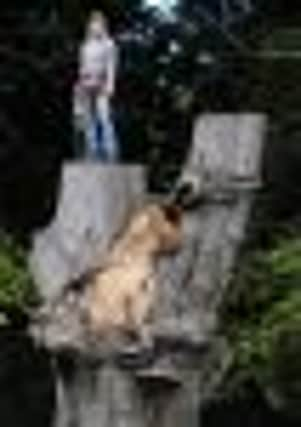Just champion... Yorkshire’s top trees in limelight


But that could all change as the 100-acre tree collection near Bedale stars in the Yorkshire section of a new book called Champion Trees of Britain & Ireland.
The book sums up the mammoth research which has gone into the online Tree Register of the British Isles. The author, Owen Johnson, has been at work on his share of the project since he was 14 and he is now 45.
Advertisement
Hide AdAdvertisement
Hide AdHe credits Thorp Perrow with 57 champions – tallest, thickest, broadest, finest or otherwise most exceptional for the species.


The arboretum’s owner, Sir John Ropner, was chief executive of Ropner PLC, running interests in shipping, engineering and more until it was taken over and he started driving a lawnmower at Thorp Perrow.
His great-grandfather started the family shipping business and his grandfather bought Thorp Perrow in 1927. Sir John’s father, Sir Leonard, an MP and High Sheriff of Durham who became a baronet, started working on the grounds in 1931, planting a shelter belt of Lawson cypresses and bringing in trees from all over the world to plant inside it.
Sir John says now: “I used to wish my father had collected something like French Impressionist paintings instead and when he died, in 1977, I had no idea what I was inheriting. But I have learned since and I am proud to have restored and added to what he made.”
Advertisement
Hide AdAdvertisement
Hide AdThe arboretum has a “champions trail” based on its entries in the Tree Register. It takes in a top specimen of an unusual laburnum-broom hybrid which flowers half pink and half yellow, and a Chinese privet which is a particularly twisty example of a species which starts twisting as a root.


Thorp Perrow also has five “national plant collections”, meaning they are the most comprehensive of their kind – ranges of laburnum, tilia (lime), juglans (walnut), fraxinus (ash) and cotinus (smoke bush). It has examples of another 2,000 types, including a Persian ironwood, too dense to float, and a “living fossil”, an Australian Wollemi pine, which was only known from fossils 150 million years old until a specimen was found in 1994. Now, thanks to propagation, visitors can buy a whip of it in the Thorp Perrow plant shop for £120.
Arboretum curator Faith Roskrow says: “The first thing you discover when you get into trees is the staggering variety in each species. In beeches alone, for example, we have a champion golden beech and then there are weeping beech, copper beech, large leaf beech, cut leaf beech and fastigated beech, which is sort of columnar in shape, as well as the common beech – and I could go on.”
Champion Trees of Britain & Ireland: The Tree Register Handbook, by Owen Johnson, via Kew Publishing, can be ordered from the Yorkshire Post Bookshop for £25 plus post costs of £2.75. See www.yorkshirepostbookshop.co.uk or call free on 0800 0153232. Thorp Perrow is open to the public all year, at DL8 2PR. See www.thorpperrow.com/
Roll call of the biggest and best
Advertisement
Hide AdAdvertisement
Hide AdThe oldest tree in Europe is thought to be a yew, possibly 5,000 years old, at Fortingall, Perthshire. Some British oaks and chestnuts are thought to be at least 1,000 years old. A yew at Fountains Abbey in Yorkshire appears to have stood for 1,500 years.
Tallest tree in the book is a grand fir of 63 metres (206ft) at Ardkinglas, Argyll. Tallest broadleaf is a London plane of 48.6 metres (159ft) at Bryanston School, Dorset.
Bulkiest is probably a sessile oak at Croft Castle Park, Herefordshire. But there might have been bigger elms before Dutch Elm Disease took most of them out.